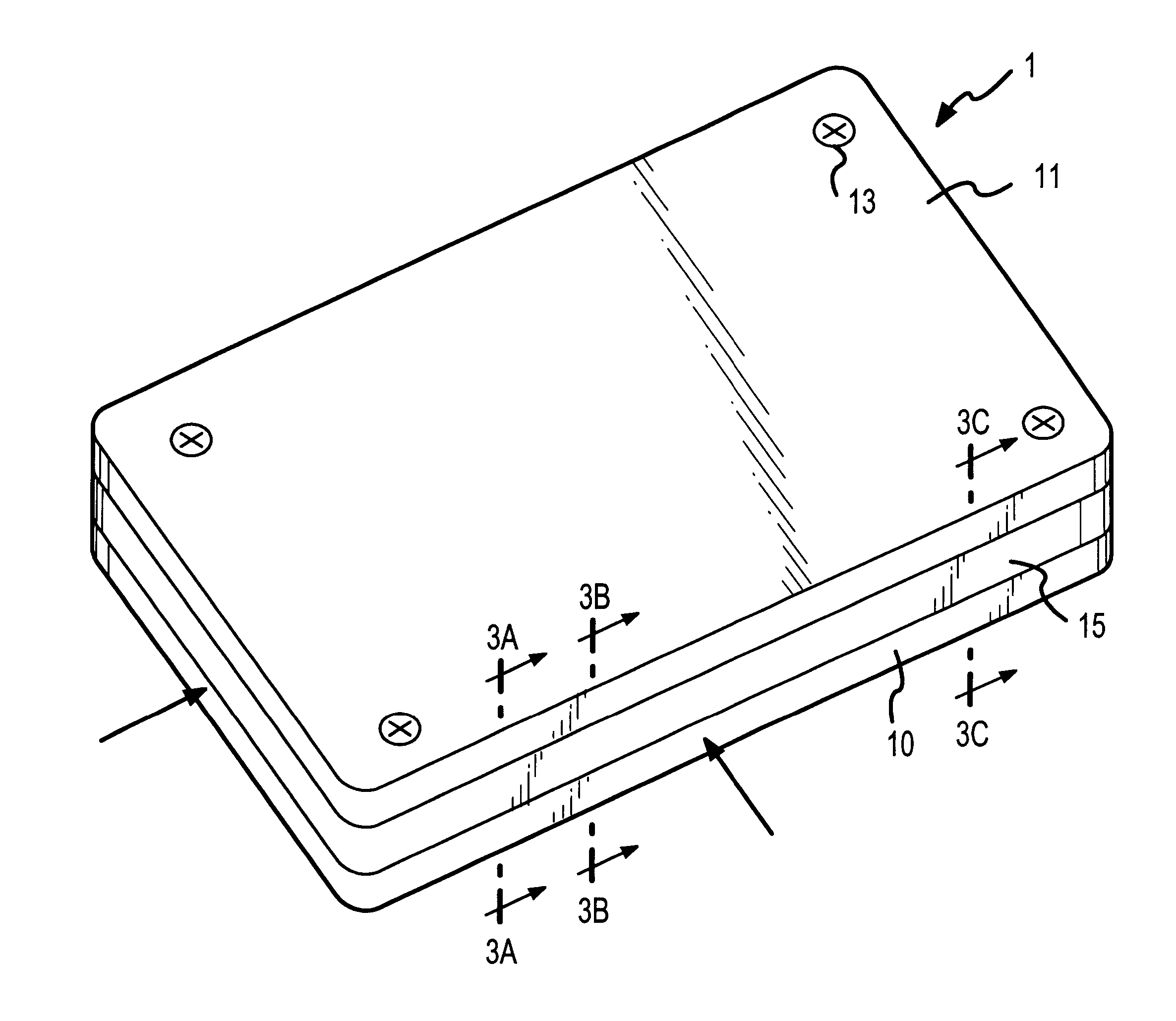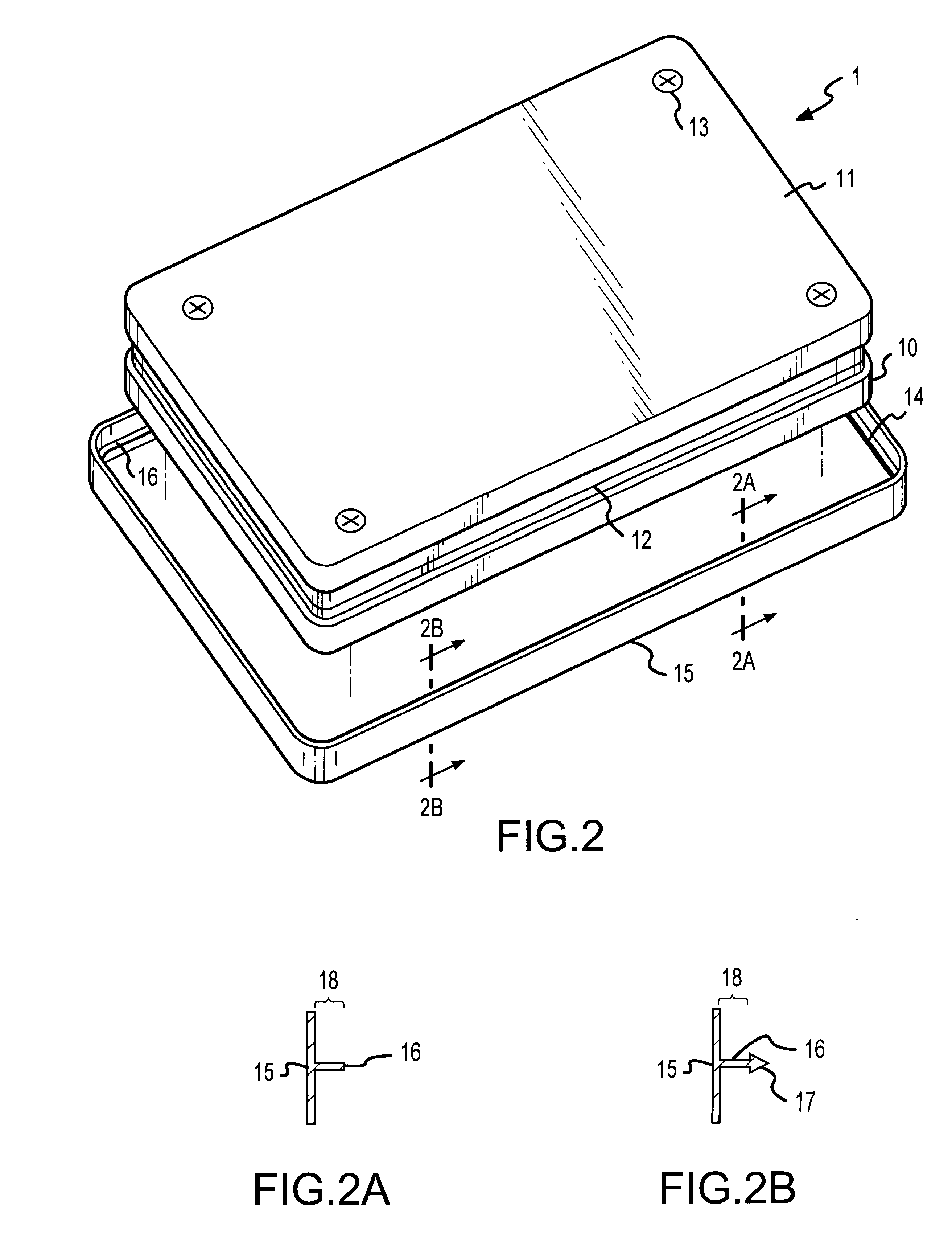Component sealing system
a sealing system and component technology, applied in the direction of hermetically sealed casings, electrical apparatus casings/cabinets/drawers, instruments, etc., can solve the problems of affecting the proper read/write function of hda, excessive emi, and sometimes necessary rework, so as to fast and secure seal and unseal the hda case elements
- Summary
- Abstract
- Description
- Claims
- Application Information
AI Technical Summary
Benefits of technology
Problems solved by technology
Method used
Image
Examples
Embodiment Construction
Having reference to FIG. 1, a first preferred embodiment for carrying out the principles of the present invention is shown. Having reference to that figure, case 1 is shown to comprise a pair of horizontally separated case elements, 10 and 11. When assembled together, upper case 11 and lower case 10 define horizontal seam 12 therebetween. Case elements 10 and 11 are held and maintained in mechanical alignment by means of fasteners, for instance machine screws 13.
According to this embodiment, upper and lower case elements 11 and 10 respectively, when mechanically fastened and aligned, further define a horizontally annular alignment depression, 14 for receiving therein elastic sealing band 15. Accordingly, it is seen that case 1 comprises a pair of horizontally separated case elements 10 and 11 which are vertically fastened together by machine screws 13.
In order to seal case elements 10 and 11 elastic sealing band 15 is provided. By way of illustration but not limitation, in a first p...
PUM
| Property | Measurement | Unit |
|---|---|---|
| pressure | aaaaa | aaaaa |
| electrically conductive | aaaaa | aaaaa |
| conductive | aaaaa | aaaaa |
Abstract
Description
Claims
Application Information
 Login to View More
Login to View More - R&D
- Intellectual Property
- Life Sciences
- Materials
- Tech Scout
- Unparalleled Data Quality
- Higher Quality Content
- 60% Fewer Hallucinations
Browse by: Latest US Patents, China's latest patents, Technical Efficacy Thesaurus, Application Domain, Technology Topic, Popular Technical Reports.
© 2025 PatSnap. All rights reserved.Legal|Privacy policy|Modern Slavery Act Transparency Statement|Sitemap|About US| Contact US: help@patsnap.com



